Entering the world of virtual reality offers unparalleled experiences, from immersive gaming to innovative productivity. Choosing the right VR headsets can seem daunting with the array of options available, but this guide simplifies the decision-making process. We’ll help you navigate the essential considerations to ensure you select a device that perfectly matches your needs and enhances your virtual journey. This article will cover the key factors and differentiating features that truly matter when investing in VR headsets, empowering you to make a confident and informed choice.
Understanding what makes a VR headset stand out, and how different specifications translate into real-world benefits, is crucial. By focusing on the most impactful aspects, you can avoid common pitfalls and find a VR headset that delivers exceptional value and a truly captivating experience.
Essential Considerations for Your VR Headset
Your Primary Purpose
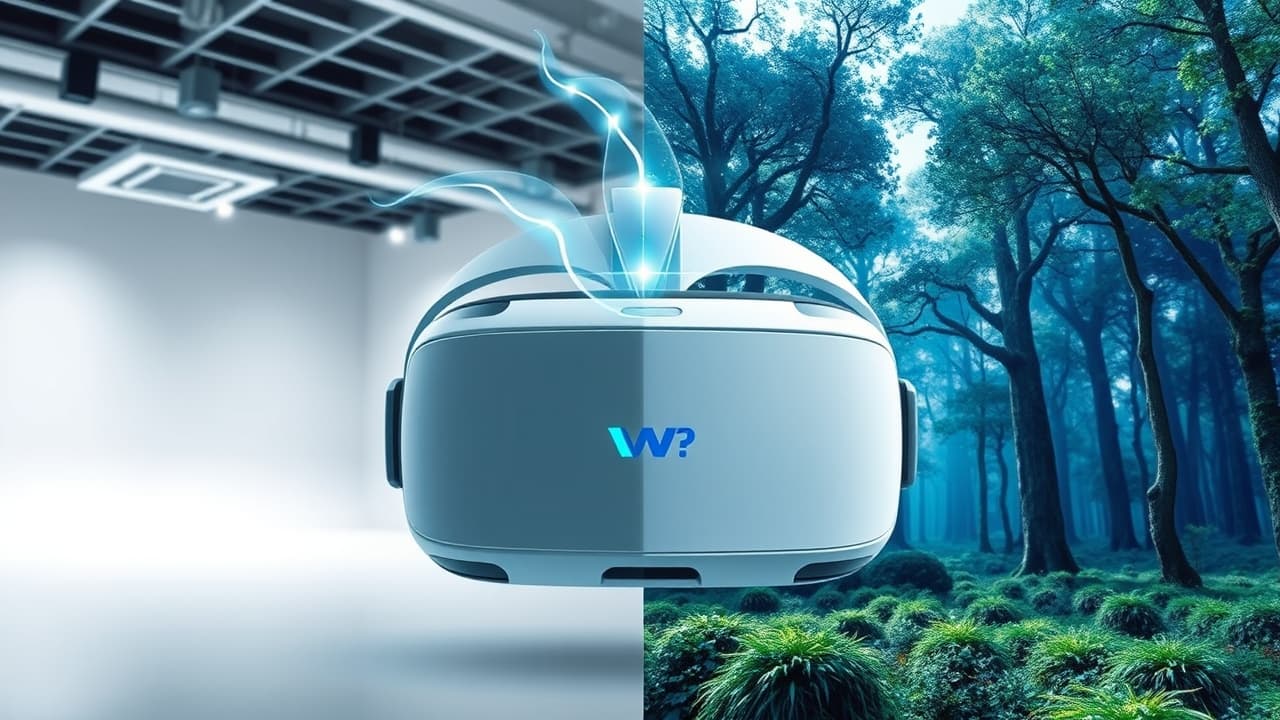
Your main reason for buying a VR headset is the most critical starting point. Different VR headsets are optimized for specific activities, ensuring the best experience when aligned with your motivation. This choice dictates the features you should prioritize in your VR headset.
For Gaming Enthusiasts: Prioritize high refresh rates, precise tracking accuracy, and responsive controllers for smooth, immersive gameplay and to prevent motion sickness.
For Mixed Reality Applications: Look for superior passthrough camera quality and robust processing power to seamlessly blend virtual content with your real environment.
For Creators and Movie Buffs: Crystal-clear resolution and stunning display quality are paramount for detailed work and crisp visuals.
Understanding your specific needs will guide you toward a VR headset with optimized performance and features, enhancing your overall satisfaction.
Resolution

Resolution, the number of pixels displayed per eye, directly influences the visual clarity and sharpness of the virtual world. A higher resolution provides a more realistic and immersive experience, reducing the 'screen door effect' where individual pixels become noticeable on VR headsets.
Optimal visuals: Seek VR headsets offering 2880x2880 pixels per eye or 4K per eye for the most crystal-clear visuals. This is crucial for detailed applications or high-fidelity media.
Acceptable visuals: Resolutions around 1832x1920 pixels per eye offer a good balance for general use, though they may not provide premium detail.
Trade-offs: Higher resolution often means a higher price and more processing power, impacting battery life and overall system performance of VR headsets.
Prioritizing resolution is key for those who value visual fidelity and want to minimize pixelation, ensuring a seamless and engaging virtual environment with their VR headset.
Refresh Rate

The refresh rate, measured in Hertz (Hz), indicates how many times the display updates per second. A higher refresh rate is essential for smooth motion, reducing motion blur, and significantly mitigating motion sickness, a common concern for VR headset users.
Superior smoothness: VR headsets offering 120Hz or 144Hz provide the smoothest visuals, ideal for fast-paced games and users prone to motion sickness. This ensures a responsive and highly immersive experience.
Adequate for casual use: A 90Hz refresh rate is generally adequate for casual use. However, it may contribute to motion sickness in more dynamic scenarios.
Trade-offs: Higher refresh rates demand more processing power from the VR headset or connected PC, potentially requiring lower graphic settings.
For a truly comfortable and responsive VR experience, especially for extended use or action-oriented content, a high refresh rate is a non-negotiable factor for your VR headset.
Wearability and Fit
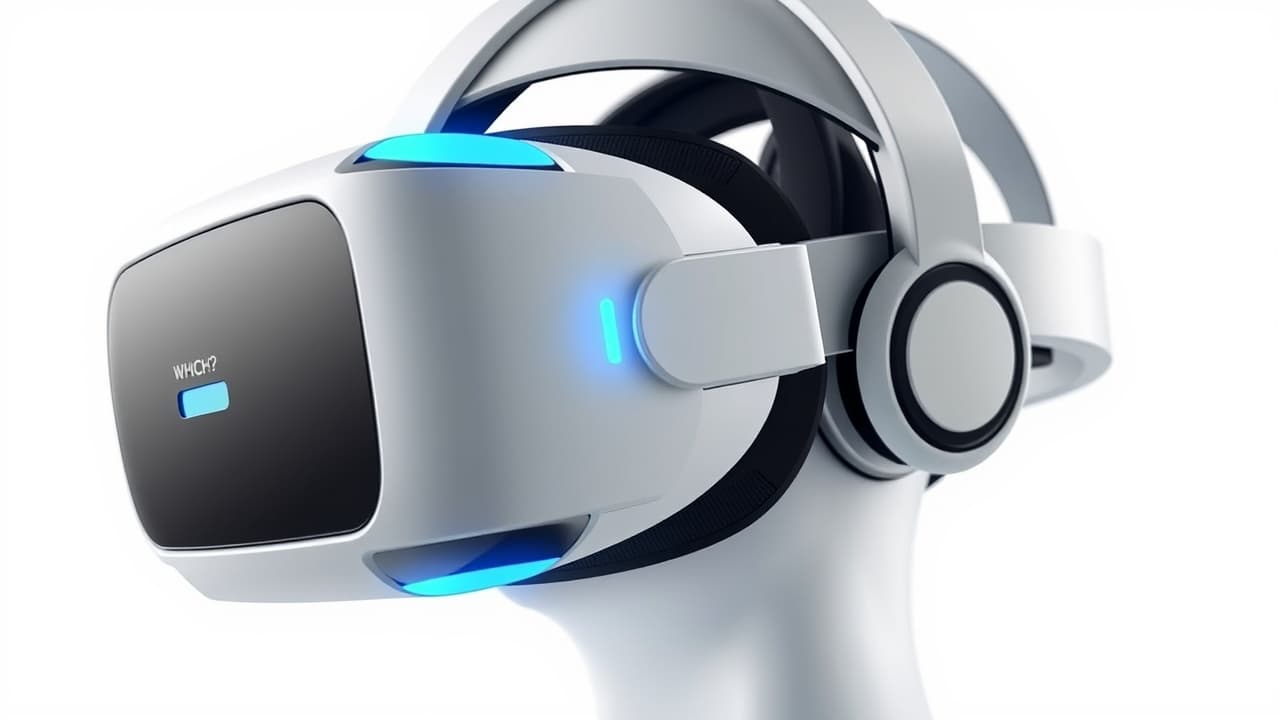
The comfort of a VR headset is paramount for extended use. Factors like weight, balance, padding, strap design, and adjustability directly impact how long you can wear the VR headset without discomfort, neck strain, or pressure points.
Weight and Balance: Lighter VR headsets (around 450g) are better for long sessions. Well-balanced designs prevent front-heaviness, which can cause facial pressure.
Padding and Facial Interface: Memory foam or breathable fabrics improve comfort and hygiene. A poor fit can cause pressure points and light leakage.
Adjustability: Adjustable straps, IPD (interpupillary distance) adjustment, and eye relief are crucial for a proper fit, clear vision, and reducing eye strain.
Strap Design: Halo strap designs distribute weight across a larger head area, minimizing facial pressure. Elite strap designs offer a secure fit for active games.
Investing in a VR headset with superior comfort ensures your VR sessions are enjoyable and free from physical distractions, allowing for deeper immersion.
Tracking Accuracy
Tracking accuracy refers to how precisely and responsively the VR headset and controllers translate your real-world movements into the virtual environment. High precision and low latency are critical for a seamless, immersive experience and for preventing motion sickness by synchronizing visual and vestibular systems.
Outside-In Tracking: Systems using external sensors offer the highest precision, often preferred by hardcore users. They require more setup space and installation.
Inside-Out Tracking: VR headsets with built-in cameras track movements without external sensors, offering easier setup and portability. Precision is generally very good, but may be slightly lower in extreme movements.
Advanced Tracking: Features like eye tracking and hand gesture recognition provide innovative, controller-free interfaces and enhance natural interactions, further boosting immersion.
For any VR application, especially interactive gaming, accurate tracking is fundamental to maintaining immersion and preventing discomfort. It ensures your actions are faithfully replicated in the virtual world of your VR headset.
Cost Considerations
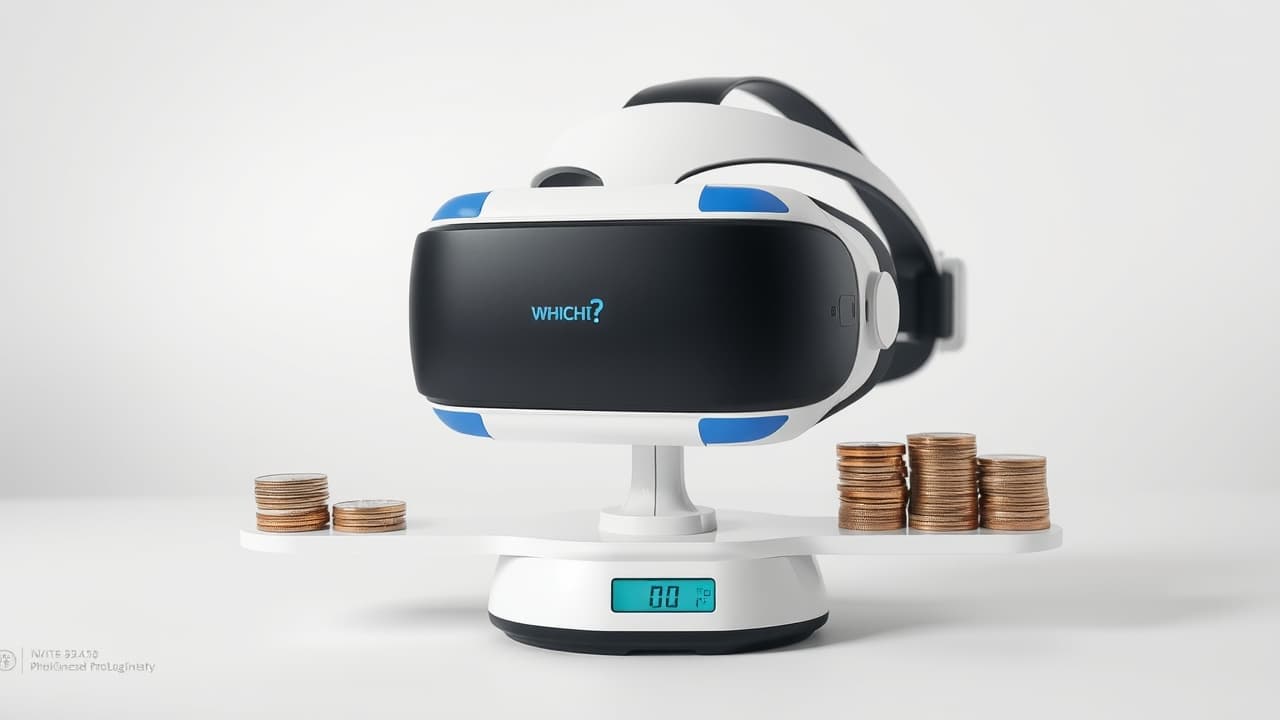
The monetary cost of a VR headset and any required additional hardware or accessories is a significant factor. Price directly influences accessibility and the level of features and performance you can expect from VR headsets.
Budget-Friendly Options: VR headsets in the $269 - $349 USD range offer a fantastic entry point, providing core capabilities at a significantly lower cost. Ideal for new users or limited budgets.
Mid-Range Value: Options between $499 - $649 USD often strike an excellent balance of sharpness, affordability, and features. They typically offer a robust experience for most users of VR headsets.
Premium and Professional: High-end VR headsets, from $1900 to over $4000 USD, cater to enthusiasts and professionals. These offer superior visual quality, advanced tracking, and premium build materials.
Trade-offs: Lower prices often mean compromises in visual fidelity and sustained performance. Higher prices typically deliver cutting-edge technology and a more refined experience.
Considering your budget alongside your desired use case will help you find a VR headset that offers the best value for your investment.
Enhancing Your Virtual Experience
Display & Lens Technology

Beyond raw resolution, the type of display panel and optical lenses significantly impact visual quality, comfort, and the VR headset's form factor. These technologies define how clear, vibrant, and immersive your virtual world appears on VR headsets.
Pancake Lenses: These advanced lenses improve sharpness and clarity across the entire screen. They also allow for a much thinner VR headset profile, contributing to better comfort and reduced front-heavy weight.
Fresnel Lenses: Common in more affordable VR headsets, Fresnel lenses can cause text fringing at peripheral edges and require more head turning for clarity. They offer cost reduction but compromise on visual fidelity.
Micro-OLED Displays: These cutting-edge displays offer breathtaking 4K resolution per eye, delivering stunning contrast and deep blacks, crucial for immersive visuals on VR headsets.
OLED HDR Displays: Provide excellent contrast and deep blacks. LCD displays, while more cost-effective, offer better brightness and reduced motion blur.
Pixels Per Degree (PPD): This metric combines resolution and field of view to indicate visual detail and sharpness per degree. A higher PPD (e.g., 25 PPD) leads to greater realism.
Field of View (FOV): The extent of the observable virtual world. A wider FOV (e.g., 120-130 degrees) enhances immersion by reducing the 'porthole effect'.
The combination of advanced display and lens technologies is crucial for achieving superior visual fidelity, reducing eye strain, and contributing to overall comfort during long sessions with VR headsets.
Blending Real and Virtual
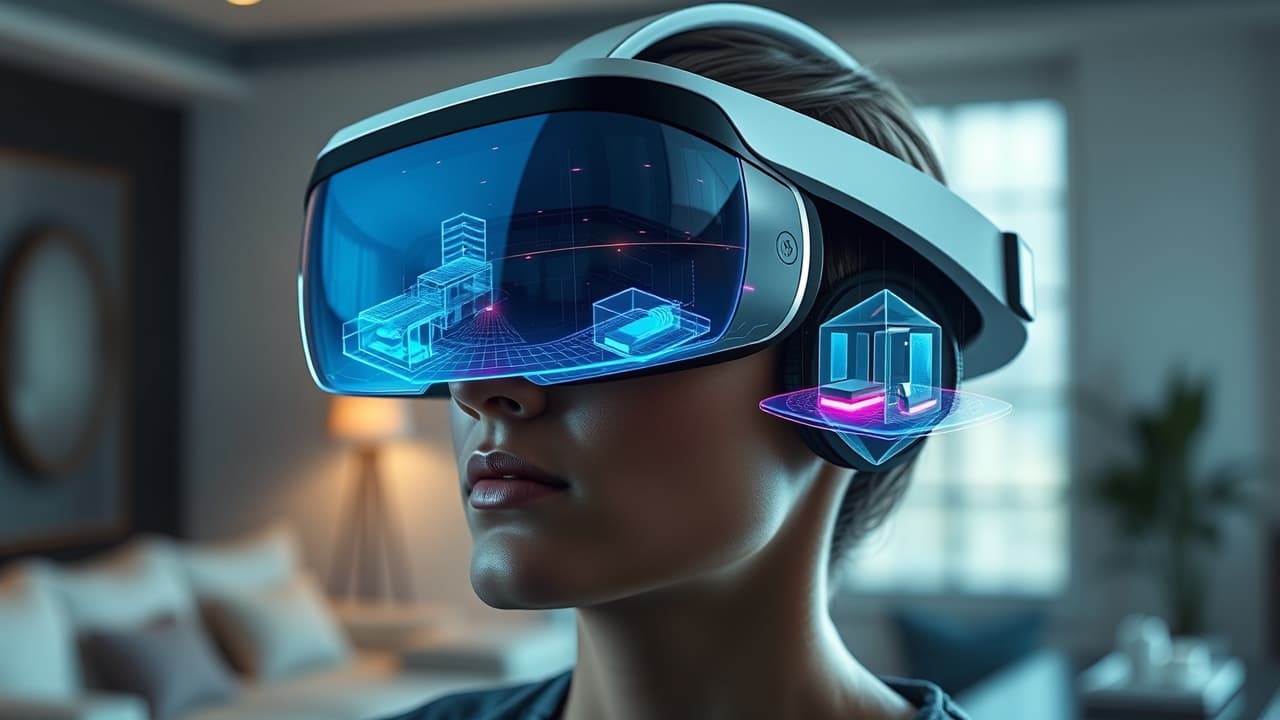
Mixed reality (MR) capabilities allow VR headsets to blend virtual content with the real world using passthrough cameras. This enables users to interact with both environments simultaneously, creating a truly futuristic and versatile experience with their VR headset.
Seamless Blending: VR headsets with impressive color passthrough offer a seamless blending of real and virtual worlds, enhancing immersion and utility beyond pure VR.
Superior Passthrough Quality: Look for devices with high-resolution passthrough video and minimal latency. This improves the realism of the mixed reality view, making virtual objects feel more present.
Trade-offs: Advanced mixed reality features, particularly superior passthrough video quality, often come with a significantly higher price point due to complex hardware.
If you envision using your VR headset for productivity or experiences that integrate with your physical surroundings, robust mixed reality capabilities are a differentiating feature worth prioritizing.
How You Connect

The way a VR headset connects to its power source, a PC, or operates as a standalone device profoundly influences mobility, performance, and overall user experience. This choice defines the freedom you have with your VR headset.
Standalone (Wireless): These VR headsets offer maximum convenience, portability, and no PC requirement. Ideal for casual users, though they may offer less advanced graphics than PCVR.
PCVR (Wired): Wired PCVR VR headsets provide superior graphics and immersion by leveraging a high-end gaming PC. The trade-off is restricted movement and potentially cumbersome cables.
Wireless PC Connectivity: Some VR headsets offer wireless connectivity to a PC, providing a near PC-tethered experience with greater freedom. A strong 5GHz Wi-Fi network is crucial.
Console VR (Wired): These VR headsets connect directly to a gaming console, offering high-quality exclusive titles and often a simpler setup. Mobility is limited.
Your choice of connectivity will define the flexibility and graphical fidelity of your VR headset experience. Consider whether portability or raw power is more important for your intended use.
Interaction Devices
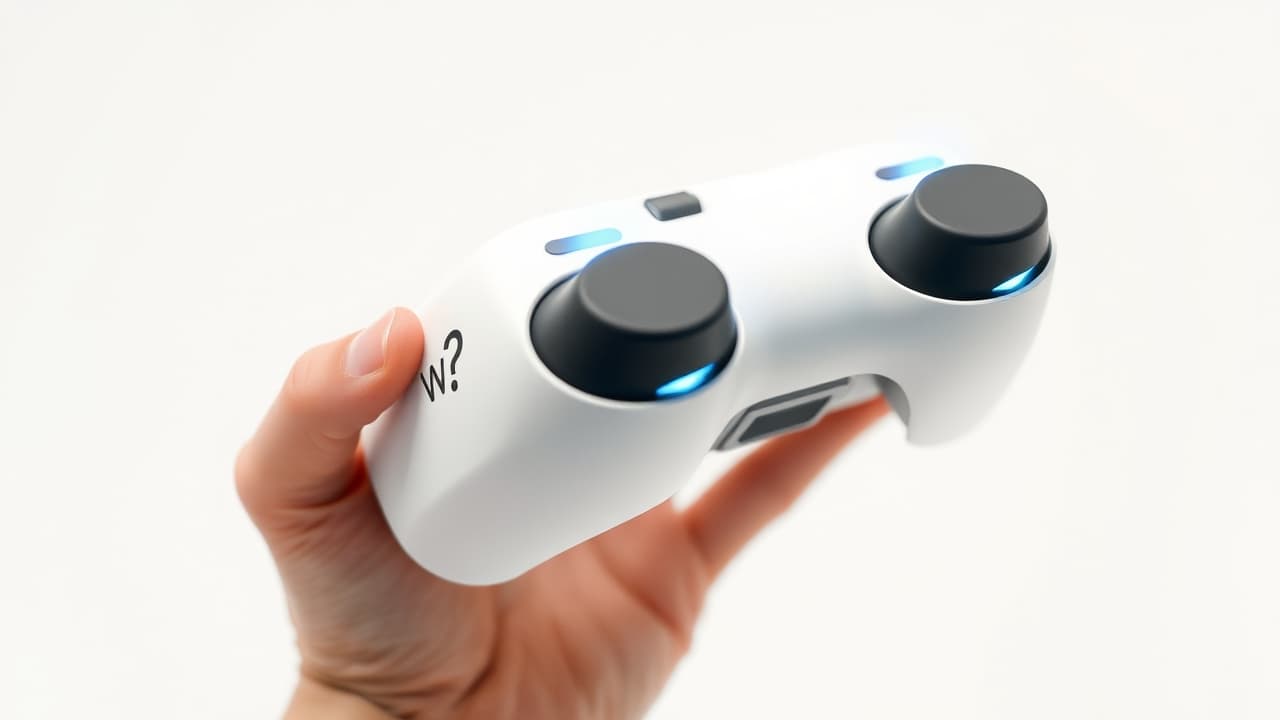
Controllers are your primary interface with the virtual world, and their quality significantly impacts immersion and interaction. Comfortable, lightweight, and responsive controllers enhance the user experience, making virtual actions feel more natural and intuitive with your VR headset.
Finger Tracking: Advanced controllers offer individual finger tracking for incredibly natural hand interactions within VR, significantly enhancing immersion.
Haptic Feedback and Adaptive Triggers: Excellent haptic feedback provides realistic tactile sensations, while adaptive triggers vary resistance based on in-game actions, contributing to a more immersive feel.
Controller-Free Interfaces: Some premium VR headsets are moving towards advanced hand and eye tracking, eliminating traditional controllers for a more intuitive interaction.
Battery Life: Consider the battery life of controllers, as poor performance can interrupt gameplay.
For gaming enthusiasts and anyone seeking deep immersion, the quality and features of the controllers are as important as the VR headset itself. They are the bridge between your intentions and the virtual world.
Internal Processing Power

For standalone VR headsets, the internal processor, memory (RAM), and storage are the heart of the device, determining its computational power, performance, and ability to render complex virtual environments. A powerful processor is a significant advantage for these VR headsets, enabling advanced features and smooth multitasking.
Processing Power: Look for powerful processors like the Qualcomm Snapdragon XR2 Gen 2 or Apple's M-series chips. These enable complex scene rendering, multitasking, and support advanced features like high-fidelity mixed reality on VR headsets.
RAM and Memory Throughput: Higher RAM (e.g., 8GB or 12GB LPDDR5) and greater memory throughput allow for faster texture loading, quicker app launch times, and seamless transitions. This is especially important for graphically intensive titles on VR headsets.
Storage: Available storage (e.g., 128GB, 256GB, 512GB) dictates how many games and applications you can install directly on the VR headset. More storage is beneficial for extensive content libraries.
Thermal Management: Efficient thermal management systems are crucial for maintaining sustained clock speeds and consistent performance, preventing thermal throttling during extended use of VR headsets.
For standalone VR headsets, the internal hardware directly determines the quality and fluidity of your VR experience. Prioritizing robust processing power ensures your device can handle demanding applications and offers longevity.
How to Choose the Best VR Headset for Your Needs
Selecting the ideal VR headset involves more than just looking at specifications; it’s about aligning the device with your specific virtual reality goals. To narrow down the many options, begin by clearly defining your primary purpose for entering the virtual world. Your motivation will dictate which features are most important in a VR headset.
Once your purpose is clear, consider key factors like visual resolution, refresh rate for smooth motion, and overall comfort. Evaluate how you want to connect—whether a standalone, wireless experience is crucial, or if you prefer the power of a PC-tethered system. Finally, establish a budget, as prices for VR headsets vary significantly. This structured approach will guide you to a confident and informed decision on your next VR headset.
Balanced Performance for Everyday Use
This category is for users seeking a versatile virtual reality experience that balances features, ease of use, and a reasonable price. These individuals want an all-in-one solution for gaming, social interaction, and exploring virtual worlds without needing a high-end gaming PC. They value accessibility and a broad content library for diverse activities on their VR headset.
Cost: Mid-range ($400-$700 USD) for a good balance of features and affordability.
Connectivity: Standalone operation is preferred for maximum convenience and portability.
Resolution: Good visuals (around 2K pixels per eye) for clear and immersive images.
Content Library: Access to a broad range of games and applications is essential.
Recommended
Meta Meta Quest 3
The Meta Quest 3 delivers significant upgrades in visual clarity and performance, making it an excellent all-around VR headset. Its standalone nature provides freedom, while improved mixed reality capabilities add versatility for entertainment and light productivity. It offers a robust ecosystem without needing a PC, making it a highly versatile VR headset.
Resolution: 2064 x 2208 pixels per eye for crystal-clear visuals.
Processor: Qualcomm Snapdragon XR2 Gen 2, offering more than twice the GPU performance of Quest 2.
Connectivity: Standalone (Wireless) with optional PC tethering via Meta Quest Link Cable.
Mixed Reality: Full-color passthrough cameras for immersive mixed reality experiences.
Ultimate PC VR Gaming Immersion
This segment caters to dedicated PC gamers who demand the absolute best in visual quality, expansive field of view, and pinpoint tracking accuracy for the most immersive gaming experiences. These users typically possess a powerful gaming PC and are willing to invest in a premium VR headset to achieve unparalleled virtual worlds and fluid gameplay.
Resolution: Highest possible (4K+ per eye) for crystal-clear visuals, eliminating the 'screen door effect'.
Refresh Rate: 120Hz or higher for fluid motion, reduced motion blur, and mitigated motion sickness.
Tracking Accuracy: External (outside-in) tracking systems for superior precision and reliability.
Display & Lens Technology: Advanced lenses (Pancake, Aspheric) and high-contrast displays (QLED, MiniLED) for enhanced visual fidelity.
Connectivity: Wired PCVR is essential for uncompressed visuals and lowest latency.
Best Options
Pimax Pimax Crystal Super VR Headset
For those seeking the pinnacle of visual fidelity in PC VR, the Pimax Crystal Super offers unmatched resolution and a customizable field of view. Its advanced display technology and eye-tracking capabilities deliver a truly next-generation immersive experience, ideal for detailed virtual environments where clarity is paramount. This VR headset is a top choice for enthusiasts.
Resolution: 3840 x 3840 pixels per eye for exceptional image quality.
Display: QLED + MiniLED with Local Dimming 2.0 for vibrant colors and deep blacks.
FOV: Up to 138° HFOV (Labs mode) for an expansive view.
Features: Built-in Eye Tracking and Dynamic Foveated Rendering for optimized performance.
HTC HTC Vive Pro 2 Headset Only
The HTC Vive Pro 2 is a strong contender for PC VR enthusiasts, delivering stunning 5K resolution and a wide field of view. Its high refresh rate ensures smooth gameplay, and the external SteamVR tracking provides exceptional precision. This makes it a solid choice for demanding VR titles where accuracy and visual quality are paramount, offering a premium VR headset experience.
Resolution: 2448 x 2448 pixels per eye for sharp and detailed visuals.
Refresh Rate: 120Hz for incredibly smooth motion.
Field of View: 120° for an expanded sense of presence.
Tracking: Highly precise SteamVR Tracking V2.0 (external base stations required).
Seamless Mixed Reality and Productivity
This user group focuses on blending virtual content with their physical environment for productivity, creative work, or advanced mixed reality applications. They prioritize superior passthrough quality, robust processing power, and comfortable designs for extended work sessions, valuing innovation and seamless interaction between the real and virtual worlds in a VR headset.
Blending Real and Virtual: Superior full-color passthrough with high resolution and minimal latency is critical.
Internal Processing Power: A powerful chip (e.g., Apple M-series, Snapdragon XR2 Gen 2) for complex rendering and multitasking.
Resolution: Crystal-clear visuals for detailed work, sharp text, and high-fidelity virtual objects.
Advanced Tracking: Eye and hand tracking enable intuitive, controller-free interaction.
Best Options
Apple Apple Vision Pro M5
The Apple Vision Pro M5 is engineered for spatial computing, offering unparalleled mixed reality capabilities with its advanced passthrough and high-resolution Micro-OLED displays. Its powerful M5 and R1 chips enable seamless multitasking and immersive productivity, making it ideal for professionals and creators who demand cutting-edge technology for their workflows. This VR headset represents a premium choice.
Processor: Apple M5 chip (10-core CPU, 10-core GPU) + Apple R1 chip for high performance.
Display: Micro-OLED with 23 million pixels for incredibly sharp images and crisp text.
Tracking: Advanced Eye tracking and Hand tracking for intuitive, controller-free interaction.
Mixed Reality: Superior passthrough for seamless blending of digital content with the real world.
Meta Meta Quest 3
The Meta Quest 3 provides excellent value for users interested in mixed reality and productivity, offering robust full-color passthrough at a more accessible price point. Its powerful processor and versatile standalone nature make it suitable for blending virtual monitors with real-world tasks and exploring new AR experiences, serving as a solid entry into spatial computing with a capable VR headset.
Processor: Qualcomm Snapdragon XR2 Gen 2 for enhanced performance.
Resolution: 2064 x 2208 pixels per eye, providing clear visuals.
Mixed Reality: Full-color passthrough cameras (4MP) for effective real-world integration.
Tracking: Inside-out 6DOF tracking with hand-tracking capabilities.
Dedicated Console Gaming
This category is for PlayStation 5 owners who want a high-quality, integrated gaming experience specifically designed for their console. These users prioritize access to exclusive titles, comfortable and responsive controllers, and a simple setup that seamlessly connects with their existing gaming ecosystem, enhancing their console experience with a dedicated VR headset.
How You Connect: A direct, wired connection to a gaming console (PS5) is essential.
Interaction Devices: Ergonomic controllers with advanced haptic feedback and adaptive triggers are crucial.
Display & Resolution: OLED panels for deep blacks and vibrant colors, with good resolution (around 2K per eye).
Content Library: Access to console-exclusive VR titles is a key differentiator.
Recommended
Sony Sony PlayStation VR2
The Sony PlayStation VR2 offers a deeply immersive VR experience tailored for the PlayStation 5. Its OLED display delivers stunning visuals with vibrant colors and deep blacks, while the Sense controllers provide intuitive and responsive interaction. With a simple one-cable connection and access to exclusive titles, it is the ideal VR headset choice for console gamers.
Display: OLED panel with 2000 x 2040 pixels per eye.
Refresh Rate: 90Hz, 120Hz for smooth gameplay.
Connectivity: Simple USB Type-C connection directly to the PS5 console.
Controllers: Sense controllers with precise tracking, haptic feedback, and adaptive triggers.
Entry-Level Virtual Experiences
This segment targets new users or those with a strict budget who want an affordable way to experience virtual reality. They seek a VR headset that provides core functionalities, is easy to set up, and offers good value for its price, even if it means some compromises on premium features found in higher-end models.
Cost: Budget-friendly ($250-$400 USD), making VR accessible.
Connectivity: Standalone operation is preferred for simplicity, eliminating the need for a PC or external sensors.
Ease of Use: A straightforward setup process and intuitive interface are key for new users.
Performance: Adequate processing power for smooth basic VR experiences.
Recommended
Meta Meta Quest 3S
The Meta Quest 3S is an excellent entry-point into VR, offering a powerful processor and access to a vast content library at a highly accessible price. It provides a comfortable, standalone experience with functional mixed reality features, making it ideal for new users or those on a tight budget who want to explore virtual worlds without a significant investment in a VR headset.
Price: Starting at $249.99 USD (sale price for 128GB model), offering great value.
Processor: Qualcomm Snapdragon XR2 Gen 2, delivering robust performance.
Resolution: 1832 x 1920 pixels per eye, providing sharp visuals for general use.
Connectivity: Standalone (Wireless) with PCVR support via Air Link/USB-C.
